Q1. In an election between two candidates one got 75% of the total valid votes, ![]() of the total votes were invalid. The total number of votes are 3600, the number of valid votes that the other candidates got was:-
of the total votes were invalid. The total number of votes are 3600, the number of valid votes that the other candidates got was:-
(a) 770
(b) 750
(c) 780
(d) 810
(e) 900
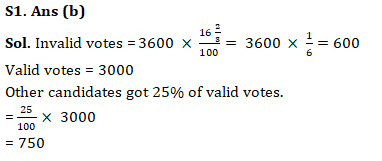
Q2. If a : b = 7 : 11 and c : d = 3a : 5b then ac: bd is:
(a) 21 : 55
(b) 9 : 17
(c) 77 : 97
(d) 13 : 19
(e) 147 : 605

Q3. A sum of Rs. 123000 is divided among A, B and C such that A receives 25% more than B and C receives ![]() more than B, what is the share of B?
more than B, what is the share of B?
(a) Rs. 35000
(b) Rs. 36000
(c) Rs. 42000
(d) Rs. 44000
(e) None of these
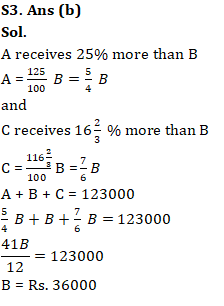
Q4. In summer, the length, breadth and height of a cuboid increases by 10%, 20% and 30% respectively. Find the percentage increase in cuboid’s volume.
(a) 60%
(b) 66%
(c) 72%
(d) 71.6%
(e) 75.6%

Q5. The ratio of the present ages of A and B is 3 : 5 respectively four years hence, the ratio will be 11 : 17. What is the present age of A?
(a) 18 years
(b) 20 years
(c) 30 years
(d) 17 years
(e) 19 years

Directions (6-10): No. of students (in thousands) who opted for three different specialization during the given five years in a university.
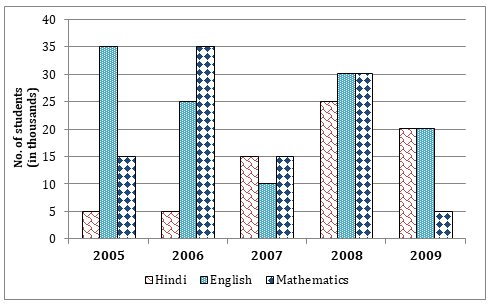
Q6. Out of total number of students who opted for the given three subjects, in year 2009 , 38% were girls. How many boys opted for Maths in the same year?
(a) 1124
(b) 1536
(c) 1316
(d) Cannot be determined
(e) None of these
S6. Ans.(d)
Sol. We do not know the number of girls in mathematics
Q7. If the total number of students in the university in the year 2007 was 455030, then the total number of students who opted for the given three subjects were approximately what percent of the total students?
(a) 17%
(b) 9%
(c) 14%
(d) 7%
(e) 21%

Q8. What is the total number of students who opted for Hindi and who opted for maths in the years 2006, 2007 and 2009 together?
(a) 97000
(b) 93000
(c) 85000
(d) 96000
(e) None of these
S8. Ans.(e)
Sol.
Required number of students
= (5 + 35 + 15 + 15 + 20 + 5) × 1000 = 95000
Q9. The total number of students who opted for maths in the years 2005 and 2008 together are approximately what percent of the total number of students who opted for all three subjects in same years?
(a) 36%
(b) 24%
(c) 44%
(d) 32%
(e) 46%
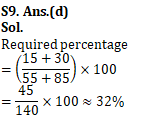
Q10. What is the respective ratio between the number of students who opted for English in the years 2006 and 2008 together and the number of students who opted for Hindi in the years 2005 and 2009 together?
(a) 11 : 5
(b) 11 : 9
(c) 11 : 7
(d) 14 : 3
(e)none of these
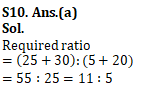
Directions (11-15): What should come in place of question mark (?) in the following given questions(just calculate the approximate value) ?

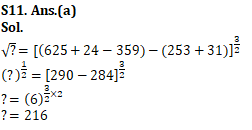


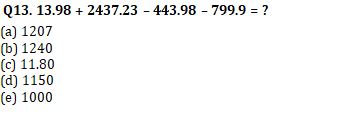
S13. Ans.(a)
Sol.
? = 14+ 2437 – 444 – 800 = 1207


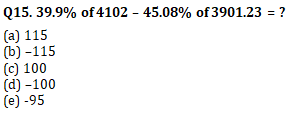

If you want to study Quantitative Aptitude for IBPS PO Prelims then you can also check out the video given below:
- Quantitative Aptitude Study Notes for Bank Exams
- Quantitative Aptitude Questions for all Competitive Exams

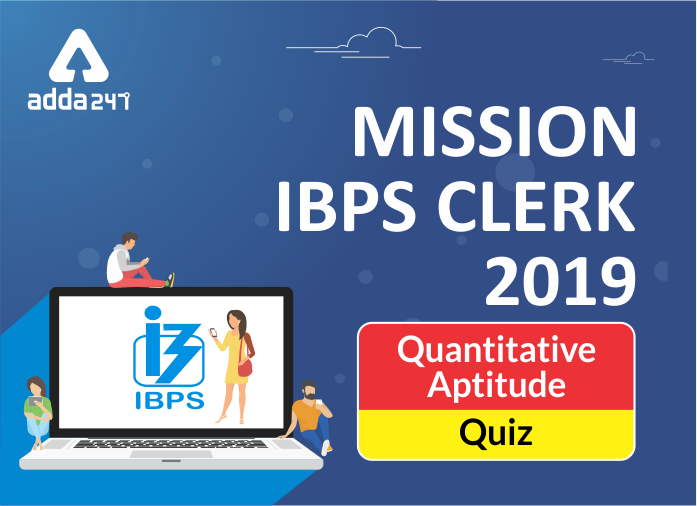
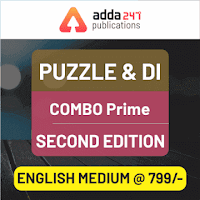


 GA Capsule for SBI Clerk Mains 2025, Dow...
GA Capsule for SBI Clerk Mains 2025, Dow...
 The Hindu Review October 2022: Download ...
The Hindu Review October 2022: Download ...
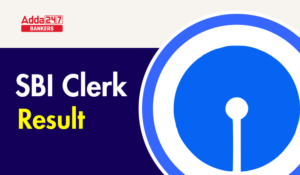 SBI Clerk Prelims Result 2025 Out, Direc...
SBI Clerk Prelims Result 2025 Out, Direc...







